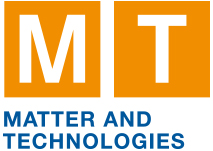Speaker
Description
The Compressed Baryonic Matter (CBM) experiment at the FAIR project is designed to study the properties of strongly interacting matter at high baryon densities, where conditions similar to those in neutron star cores can be created. It will use high-intensity heavy-ion beams from the SIS100 synchrotron to collide nuclei at energies of up to 11 AGeV for heavy ions. The detector system is optimized for rare probes such as dileptons, charm particles, and multi-strange hyperons, which provide insight into the QCD phase diagram at high densities. Therefore, the CBM will operate in a high-rate environment, processing up to 10 million collisions per second with fast and radiation-hard detectors and a free-streaming readout.
Two of the many subsystems at the CBM experiment will be digitalized using a custom-developed ASIC, known as the Xyter mixed analog digital chip. The STS (Silicon Tracking System): the main tracking detector placed inside the superconducting dipole magnet, providing precise momentum measurement and vertex reconstruction, and MUCH (Muon Chamber): a system of gaseous tracking detectors interleaved with absorbers, dedicated to identifying muons from vector meson and charmonium decays.
Last year, we developed and successfully utilized a serial test system comprising 80 wafers, each with 360 chips. Each chip was tested individually for various parameters under predefined conditions. The data was analyzed and displayed via a web interface almost immediately after the measurement was finished. The file for laser dicing of each wafer is automatically generated and in an industrial format. In this presentation, the system will be discussed, and a summary will be given.
| Speed talk: | I am unwilling/unable to present a speed talk |
|---|

